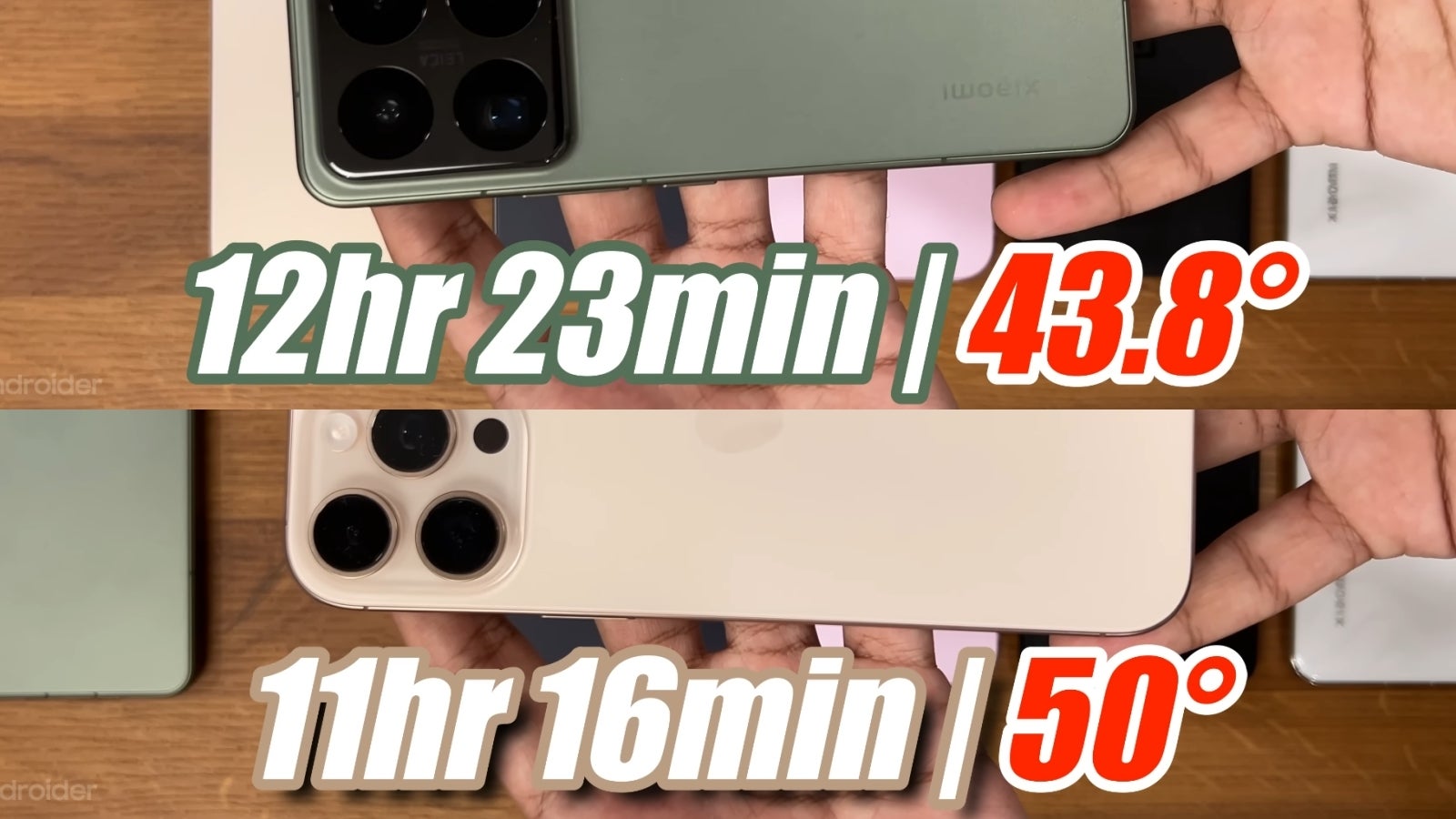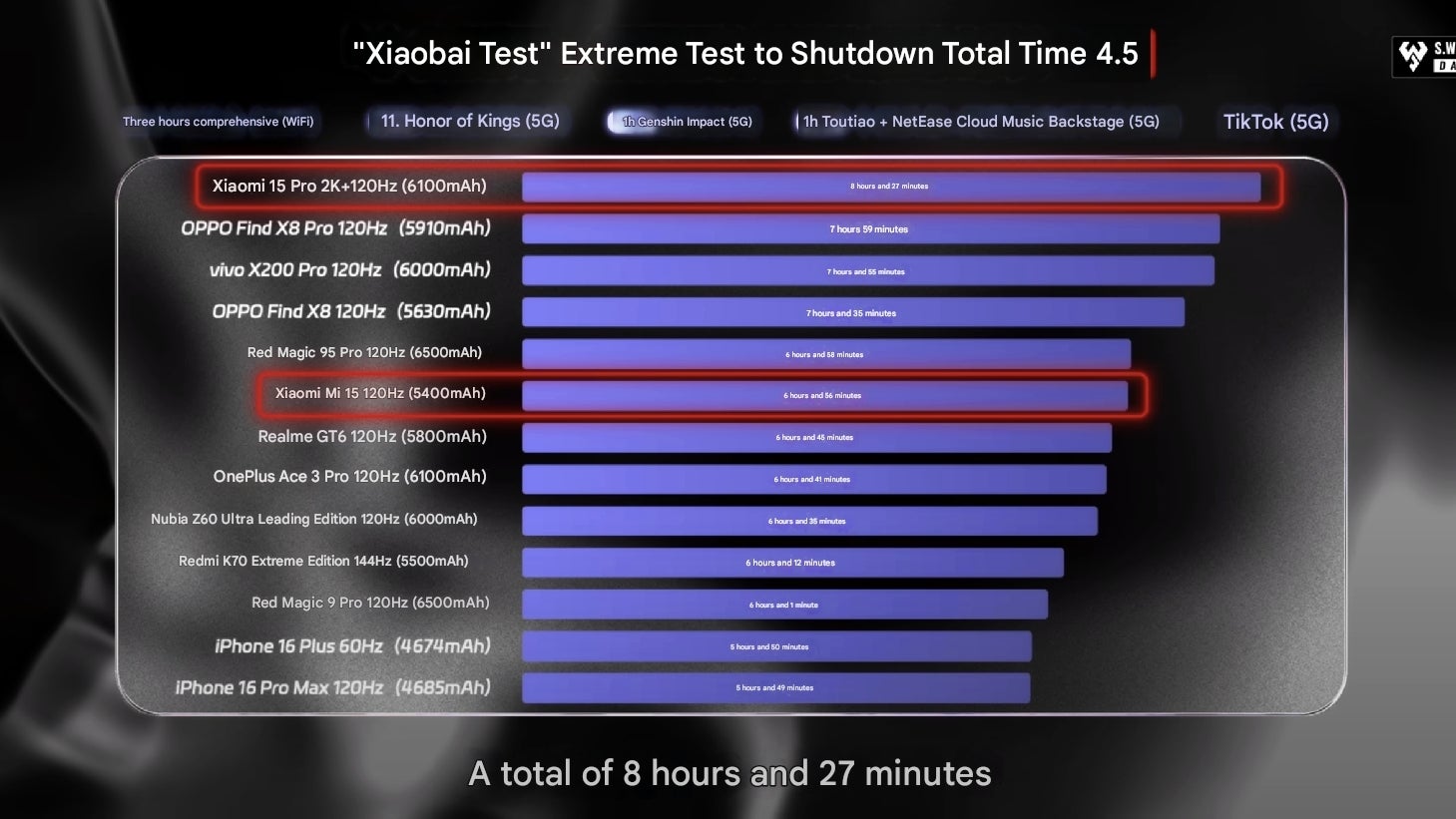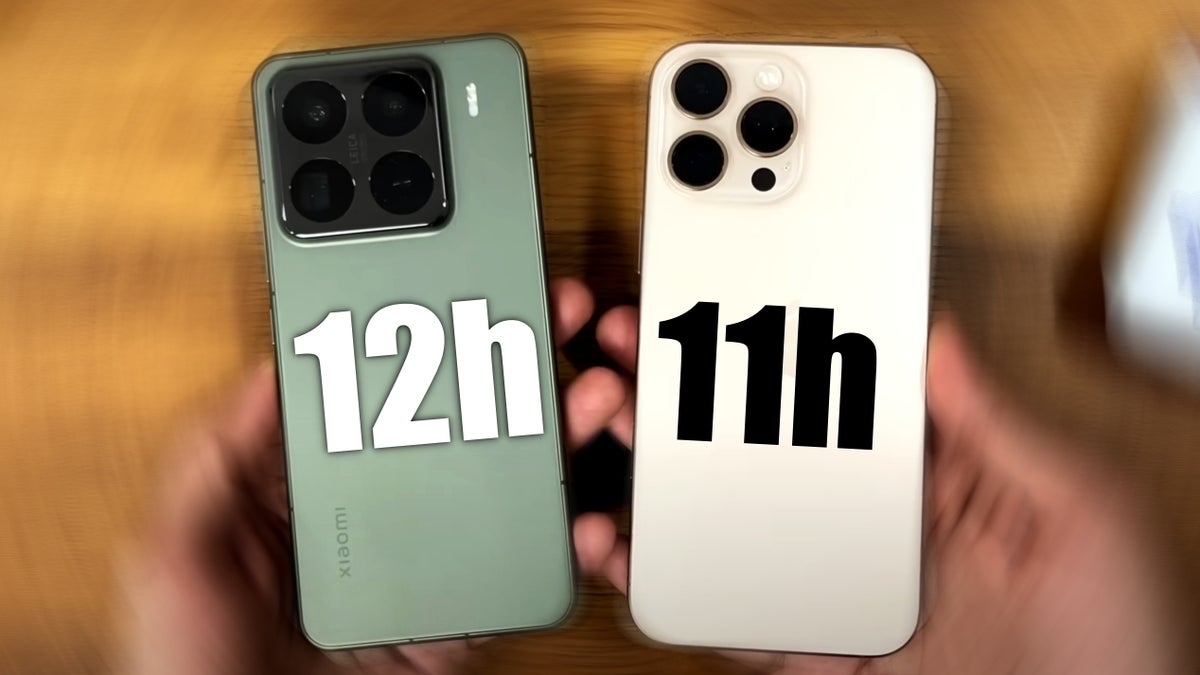While Android phones (particularly flagships) have always had larger batteries than the iPhone, they never seemed to pull off Apple’s ability to optimize the OS for maximum efficiency.
That being said, I’ll be lying if I didn’t mention the last known exceptions to the “iPhone battery rules” rule – the Huawei P30 Pro and Galaxy Note 10+. Both launched in 2019, they managed to go toe-to-toe with the iPhone 11 Pro’s impressive endurance (given the small cell it had).
However, ever since 2019, Apple’s dominance in the area of battery life has been pretty apparent. The iPhone 12 Pro Max dominated the charts in 2020 (save for specialized gaming phones with huge batteries), and the iPhone 13 Pro Max annihilated the competition in 2021.
The same story was true for the iPhone 14 Pro Max (although this one didn’t come with huge endurance upgrades), and even my iPhone 15 Pro Max, which can comfortably last 2-3h more than a Pixel 8 Pro and 1-2 more than a Galaxy S24 Ultra.
But after nearly five years of almost total battery dominance, it seems Android has finally managed to pull itself together to pull off what seemed impossible…
Android flagships finally match/surpass the iPhone’s battery life after Apple’s five-year-long dominance

Xiaomi 15 Pro outlasts the iPhone 16 Pro Max by around an hour in battery drain test by YouTuber TechDroider – real-world differences might vary.
Huge batteries using brand new tech, efficient chips, and super-fast charging (finally) did the trick
Now, I’d say “all great eras come to an end”, but this would be a bit unfair given the jaw-dropping battery life offered by the iPhone 16 series, and particularly the iPhone 16 Plus and iPhone 16 Pro Max.
But it seems it’s sort of true… Although we still haven’t tested phones like the Xiaomi 15 Pro and Realme GT7 Pro (with their massive 6,000 – 6,500 mAh batteries), some several battery drain tests are now floating around X and Youtube, confirming Apple’s lead in the battery department is now at least matched by Android’s most recent flagships running on the Snapdragon 8 Elite.To get a bit more specific and speak in practical terms, while the battery drain tests are a relatively reliable way to judge battery life, I believe Android has finally won the battery battle with the iPhone for a few specific reasons.
For one, Android’s latest flagship phones like the Xiaomi 15 Pro, Realme GT 7 Pro, and Oppo Find X8 Ultra seem to score at least as high as the IPhone in battery tests (often higher), but that’s not even the main reason they are now the obviously superior phones when it comes to the overall battery experience.
Here’s why…
Why huge batteries in Android phones will finally make the iPhone look bad
- With a huge battery capacity and 120W of super-fast charging, a phone like the Realme GT 7 Pro will give you all-day battery life with just 15 minutes of charging (0-50%) – while the iPhone takes 30 minutes to go from 0-50% – that’s a massive difference, when you have to leave the house and your phone is dead
- Respectively, if/when the battery endurance of two phone is identical, fast charging, as well as fast wireless charging, suddenly make a great deal of difference as they can get you from 0-100% in under 35-40 minutes (for the 6,500 mAh battery of the Realme), whereas the iPhone takes 2 hours to get there – another dramatic win for Android
- And another huge benefit of having a huge battery with swift charging speeds is that you can charge your phone only to (say) 80%, which makes it charge even faster – the phone will still last a whole day, and you’d be preserving your battery health and capacity over time, because you’ve clocked in less charging cycles
Superior battery is no longer a reason to buy an iPhone over an Android, and that’s a BIG deal


The Xiaomi 15 Pro outlets the iPhone 16 Pro Max in heavy gaming test. Real-world differences might vary.
Will Apple do anything to reclaim its lead with the iPhone 17 series?
In simple terms, it seems Apple is going to be falling behind Android perhaps not only in terms of battery life but in terms of the overall battery experience, which is very underrated when it comes to daily use.
Being able to top up your phone to 50% in 15 minutes and know it’s probably going to last a whole day is quite incredible, and something the iPhone can’t do (unless you’re carrying a MagSafe power bank). Speaking of power banks, what if we combine Android flagships with one? Then the difference gets even bigger.
Looking at the bigger picture, awesome news for people looking for a new phone in 2025 is that battery life might no longer be a factor when it comes to choosing between Android and iPhone, which might seem like a small thing, but actually means that picking between the two will be quite a bit easier.
Bad news for Apple – mediocre battery life might no longer be Android’s weak side

The relatively OK battery life on Android flagships has been a reason I couldn’t recommend them to heavy users. A great example is my cousin who just got a new vanilla Galaxy S24 (because his Pixel 6 broke), and quite literally his only complaint about the phone is that it has terrible battery life. Which it absolutely does.
Now, I highly doubt Samsung will be using Si/C batteries in the Galaxy S25 series, so I’d be lying if I said I think the relatively mediocre battery life of the S24 will transform into “great” battery life in the S25.
However, the ball is rolling, and as long as you’re comfortable to experiment with other (Chinese) brands, you can now get iPhone-grade battery life on Android, and let’s not forget – for much less.
A great example is the mighty Realme GT7 Pro with its 6,500 mAh cell (expected to start at 700-800 EUR in Europe), but I’m 100% positive that by Q1 of 2025, there’ll be a dozen great Android phones at various price points to choose from, and I can bet most of them will be packing at least a 6,000 mAh battery.
So, yeah… it took a whole battery tech revolution to do it, but Android has pulled off the “impossible”, and Apple should watch out.
Of course, there’s the obvious question of “what if Apple used a massive Si/C battery in the iPhone 17 Pro Max” – this would most likely wipe out Android’s success pretty quickly. However, with the pace of innovation over at Cupertino, I wouldn’t count on that. But let’s see…
